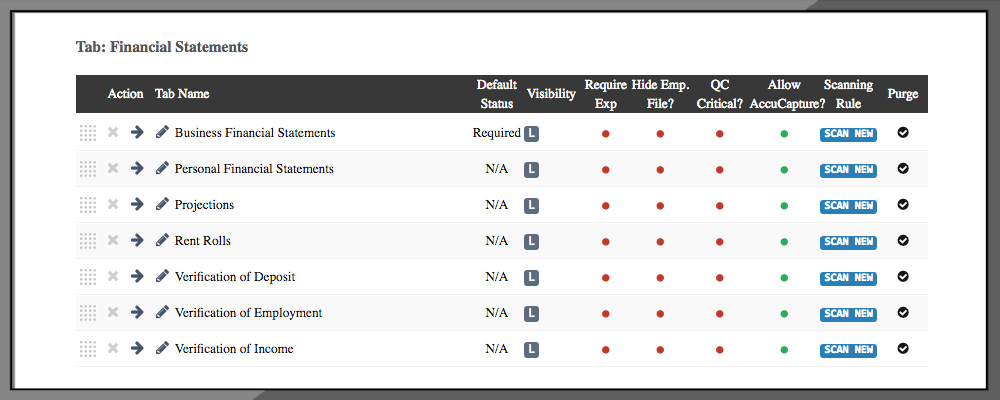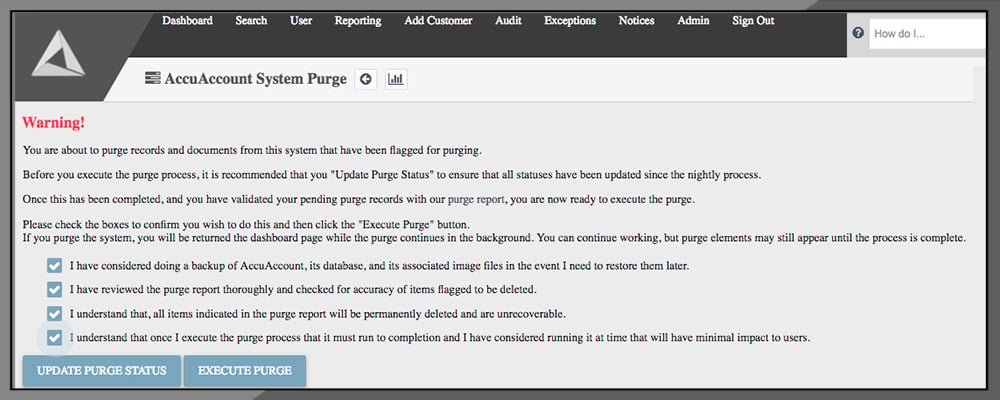Retention: Not All Document Management Systems are Created Equal
Not all document management systems are created equal - especially when it comes to ensuring compliance with your retention policy. In this post, we’ll explore several common approaches to bank document management (and why most of them fall short). We’ll also discuss why our purge feature in AccuAccount is transforming how financial institutions maintain compliance.
Paper Document Management
According to our internal study, approximately 70% of community banks rely on electronic imaging technology to organize loan files. Although that’s a sizable majority, it means that thousands of branches across the country are struggling to make do with paper documents. If you’ve ever been involved with a paper-based retention process, you know how incredibly frustrating and time-consuming it can be. For starters, you have to find a secure storage location that’s large enough to handle all of your files. Once that’s in place, someone from your bank or credit union must pay close attention to the retention tickler (oftentimes a spreadsheet), consistently identify files set for destruction, shred them, and update the tickler. All of this consumes hours of work and leaves room for tickler oversights and errant shredding.
Shared Network Drives
To reduce risk of information loss and long-term storage costs, some banks and credit unions store electronic copies of their files on internal network drives. This approach can certainly reduce the amount of shredding that an institution must do; however, it does not solve the underlying tracking issue. Typically, banks and credit union sstill use a spreadsheet or manual tickler system for knowing what to purge. Even then, it’s not easy to locate the documents that are eligible for discarding. Digging through folders - whether they be paper or electronic - is not an efficient use of time and consumes precious bank resources.
Core Imaging Modules
Many core banking systems offer basic imaging modules. In some situations, core banking providers will offer such modules at a free or reduced rate to entice your bank or credit union to sign a long-term contract. Much like shared network drives, many core imaging modules utilize a hierarchical file structure, making it difficult to locate documents that need to be purged. And, unless the imaging module has an integrated tracking component, the need for an external tickler still persists.
Integrated Document Management System
Document retention is a big reason why 32,000+ bankers trust our AccuAccount platform. Unlike paper documents, network drives, and core imaging modules, AccuAccount delivers a single source of truth - both from an imaging and tracking perspective. Define and manage retention rules for customer types, account types, collaterals, and specific documents in the system. AccuAccount uses date fields to ensure your retention rules are followed as you intended - without relying on a third-party tickler system or spreadsheet.
As documents reach the end of their retention periods, AccuAccount prompts your team to action by preparing a summary of records that are eligible for purging (based on your institution's policy, of course). Once your team has reviewed the summary report, you can then purge the files from the system.
It’s important to note that nothing is purged automatically by AccuAccount. The system simply tracks and reports on records that need your attention, saving your bank or credit union time and boosting efficiency.
Enhance Your Retention Workflow with AccuAccount
Whether you’re shredding documents or digging through network file folders, one thing is true: your bank or credit union needs a document management system that’s capable of streamlining retention. Check out our 5 minute demo video of AccuAccount and learn how our software reduces risk, fosters transparency, and enhances compliance.
Be the first to know! Click below to follow us on LinkedIn for news and content updates!




